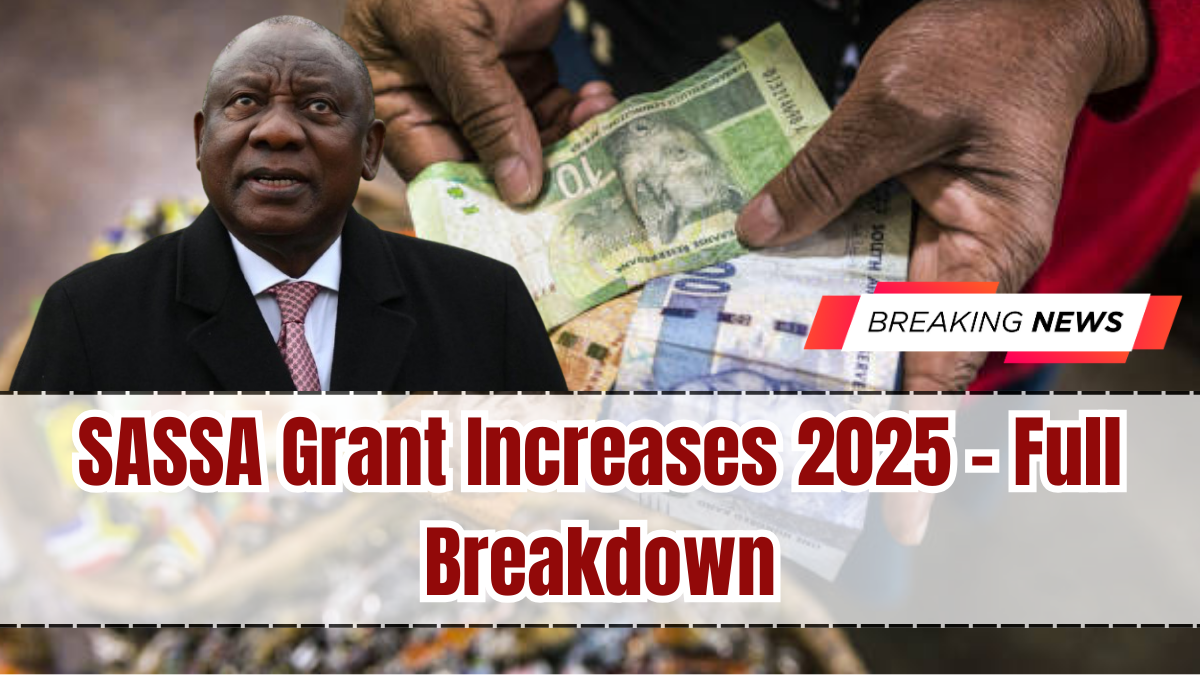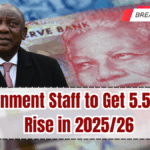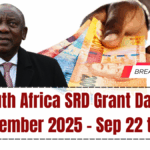Every year, South Africans look closely at the national budget announcements to see how much social grants will increase. In 2025, the government confirmed adjustments across several categories of SASSA grants, ensuring millions of vulnerable citizens receive extra financial support to keep pace with inflation.
While the increases are modest, they are essential for families who depend on grants to cover food, transport, school, and healthcare. The Social Relief of Distress (SRD) Grant remains unchanged at R370 per month, but all the permanent grants—including Old Age, Disability, Child Support, Foster Care, and Care Dependency—received an uplift.

Why the Increases Matter
Social grants are the backbone of South Africa’s social security system. More than 18 million people receive them monthly. For many households, these payments are the main or only source of income.
With rising food prices, fuel costs, and electricity tariffs, grants that do not increase would quickly lose value. By adjusting amounts in 2025, the government has tried to balance support for vulnerable groups with the need to maintain fiscal discipline.
New Grant Values in 2025
Here’s a breakdown of the updated monthly amounts as announced in the 2025 Budget:
-
Old Age Pension (under 75 years): Increased to R2,220.
-
Old Age Pension (75 years and older): Increased to R2,240.
-
Disability Grant: Increased to R2,220.
-
Care Dependency Grant: Increased to R2,220.
-
War Veterans Grant: Increased to R2,240.
-
Foster Care Grant: Increased to R1,220.
-
Child Support Grant: Increased to R560.
The SRD Grant was excluded from these changes and remains at R370 per month.
How the Increases Were Implemented
The increases came in two phases during 2025. The first adjustment happened in April 2025, while the second phase took effect in October 2025.
-
In April, most grants rose by R10 to R50, depending on the category.
-
In October, a further R20 to R30 was added, bringing grants to the final figures listed above.
This staggered approach helped government spread costs over the financial year while ensuring beneficiaries saw gradual improvements.
Who Benefits the Most?
The biggest impact is seen among:
-
Pensioners: The Old Age Grant remains the largest grant in value and supports millions of elderly South Africans. The October increase to R2,240 for those above 75 recognises the higher costs faced by older seniors.
-
Children: With the Child Support Grant now at R560, millions of children in low-income families benefit. Though still below the poverty line, the increase helps with basic needs like food and school uniforms.
-
Foster families: The Foster Care Grant rose to R1,220, providing stronger support for families caring for children who cannot live with their biological parents.
-
People with disabilities: The Disability Grant’s increase to R2,220 ensures stability for those unable to work due to health conditions.
Why the SRD Grant Was Not Increased
The SRD Grant of R370 per month remains unchanged in 2025. Government has argued that the SRD was designed as a temporary measure, though it has been extended repeatedly since the pandemic.
Instead of increasing SRD, the government is focusing discussions on a possible Universal Basic Income Grant (UBIG) in the future. Critics argue that leaving SRD untouched in 2025 is unfair, given rising food prices, but government officials maintain that fiscal limits prevent further increases for now.
Economic and Social Impact
Grant increases may seem small, but collectively they inject billions of rand into the economy each year. For rural towns and urban communities, grant payments stimulate local shops, transport services, and small businesses.
At the same time, they provide direct poverty relief. Without grants, many households would fall deeper into hunger and deprivation. Even modest increases help families stretch budgets further.
Criticism from Advocacy Groups
While the 2025 increases were welcomed, advocacy organisations have argued that they remain too low compared to the poverty line, which is over R1,500 per person per month. For example, the Child Support Grant at R560 still covers less than a third of a child’s basic monthly needs.
Civil society continues to push for higher grant amounts and for automatic adjustments linked to inflation, so beneficiaries do not have to wait for annual budget announcements.
What Beneficiaries Should Know
If you are a SASSA grant recipient, there is no need to reapply for the new amounts. The increases are applied automatically to your payments. You should continue receiving your grant through the same method, whether by bank transfer, SASSA card, or cash pay points.
It is also important to check payment dates each month, as schedules may shift slightly due to public holidays or system changes. Staying updated through SASSA’s website or official channels helps avoid confusion.
FAQs
Which SASSA grants increased in 2025?
Old Age, Disability, Foster Care, Care Dependency, War Veterans, and Child Support Grants all increased.
How much is the Old Age Grant now?
As of October 2025, it is R2,220 per month for those under 75 and R2,240 for those above 75.
Did the SRD Grant increase?
No. The SRD Grant remains at R370 per month in 2025.
Why were the increases done in phases?
To manage government finances while still giving beneficiaries support twice in the year.
Do I need to reapply for the increased amount?
No. The increase is automatic and applied to all existing beneficiaries.
Click here to know more.




